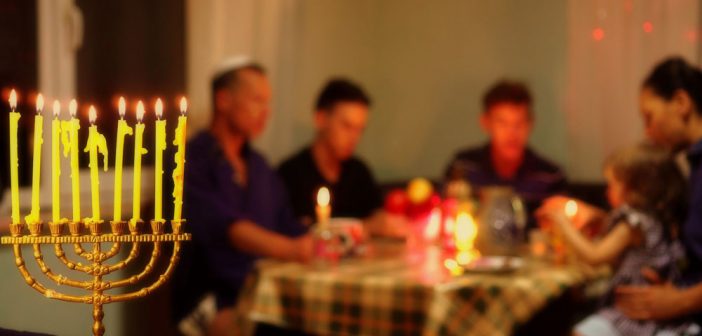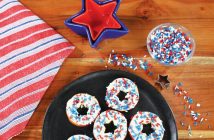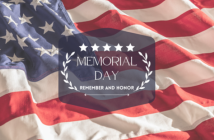Hanukkah is a joyous eight-day Jewish festival held somewhere between the end of November and late December. On the Jewish calendar it begins on the month of Kislev’s 25th day. The word Hanukkah means dedication. Hanukkah has been celebrated since about 165 BC to commemorate the victory of the Jewish people over the Greeks who tried to force the Jewish people to abandon their beliefs, rituals and traditions and worship Greek gods.
A Miracle Occurs
Soldiers in the Greek army desecrated Judea’s Holy Temple and tried to force the Jews to bow down to Greek idols and eat pork. Led by the Judah Maccabee’s Jewish army, the Jews fought back and retook the city and the temple. To purify and rededicate the Holy Temple, they relit the eternal light. But they only had enough pure, consecrated oil to keep it burning for one day and it would take 8 days to get some more. Then a miracle occurred. The light continued to burn for 8 days. Hanukkah celebrates and memorializes that event.
Advertise The Miracle
The Talmud says it’s important for Jews to ‘advertise the miracle’. To do so they follow a number of traditions. One of the most important is the lighting of the nine-branched Hanukkah menorah with 8 candles called a Hanukkiyah. An additional one is lit each night of the ‘Festival of Lights’ using the servant candle or shamash that’s placed in the raised center position on the Hanukkah menorah. Traditionally, the Hanukkah menorah is placed in the window to remind Jews it’s Hanukkah and ‘advertise the miracle’.
Hanukkah Prayers And Songs
Each night before lighting the candles, families chant three Jewish prayers. The three Hanukkah prayers are:
Hanukkah Prayer 1:
Blessed are You, Hashem our G-d, King of the universe, Who has sanctified us with His commandments, and has commanded us to Kindle the Chanukah light.
Hanukkah Prayer 2:
Blessed are You, Hashem our G-d, King of the universe, Who has wrought miracles for our forefathers, in those days at this season.
Hanukkah Prayer 3:
Blessed are You, Hashem our G-d, King of the universe, Who has kept us alive, sustained us, and brought us to this season.
On the Festival of Lights first night, the family recites all three prayers. On each of the following days, the family only recites the first two blessings. As part of the Hanukkah tradition, after kindling the lights, Hanukkah songs are sung.
Traditional Hanukkah Colors And Decorations
The traditional Hanukkah colors are blue and silver. People use strings of blinking blue lights on their windows, door frames and entranceways. Some people put up huge blue, silver and white banners just before and during Hanukkah to welcome guests. Blue and silver candles are used in the Hanukkah menorah and other blue, silver and white decorative items are used throughout the home. A large six-pointed Star of David made from two blue triangles is also used to announce Hanukkah. Dreidels and freshly cut evergreen sprigs, called a Hanukkah Bush, are also used to decorate the homes during Hanukkah. Hanukkah Gelt, chocolate coins wrapped in gold, silver and blue foil, are given to the children and spread throughout the home.
Traditional Hanukkah Foods
The key ingredient to traditional foods that are cooked during Hanukkah is oil. Some of the common foods families serve are potato/vegetable fried latkes, Loukoumades which are deep fried puffs dipped in sugar or honey, jelly donuts called sufganiyot, pancakes, apple cake, soft pretzels, challah, hamantaschen, beef brisket and cream of artichoke soup. In the United States, baking butter cookies or pretzels shaped like Hanukkah symbols is part of the Hanukkah tradition. Children love helping to make the cookies while their elders tell them about the story and traditions of the Jewish people and the Maccabees. Traditional Hanukkah holiday foods are usually fried and have lots of cheeses.
A Traditional Hanukkah Game
Another Hanukkah tradition is for children to pay with spinning dreidels. A dreidel is a small top with four sides. Each side of the top has a Hebrew letter marked on it. The letters are nun, gimel, hey and shin and together they mean “A Great Miracle Happened There”. The elders teach the children that those are the holiday’s most important words. The children are encouraged to play with them throughout the 8 days of Hanukkah’s Festival of Lights.
A New Gift Giving Tradition
Buying presents for children which they are given and encouraged to open during Hanukkah is a relatively new tradition. Jewish people see their nation as having received a great gift with the miracle of the oil that took place in Judea thousands of years ago. As a result of that, gift giving has become a popular Hanukkah tradition. During Hanukkah older family members give Jewish children small gifts to create a festive mood and help them experience the joy of receiving an unexpected gift like their ancestors did during that first Hanukkah.
Two Hanukkah Miracles
To many, Hanukkah celebrates two miracles. First, Matthias and his son, Judah Maccabee were able to transform ordinary farmers and shepherds into fierce, cunning and brave soldiers who defeated a many times larger, better armed, Greek army and liberated Judea and reclaimed, cleansed, rebuilt and rededicated the Holy Temple. This is considered the first Hanukkah miracle. One day’s worth of consecrated oil lasting for 8 days while their Holy Temple was being rededicated is considered to be the second Hanukkah miracle. Jews have celebrated this miraculous occasion ever since.
Lighting The Hanukkah Candles
The most important part of the Hanukkah tradition is that after sundown each night during the celebration, the Hanukkah candles are lit and the traditional blessings recited. The candle on the Hanukkiah’s far right is lit on the first night. Each succeeding night, another candle is placed on the left and lit until the eight night when all of the eight candles are lit. This is a traditional ritual done with gaiety and gusto to remember ‘A Great Miracle Happened There’ in Judea.









